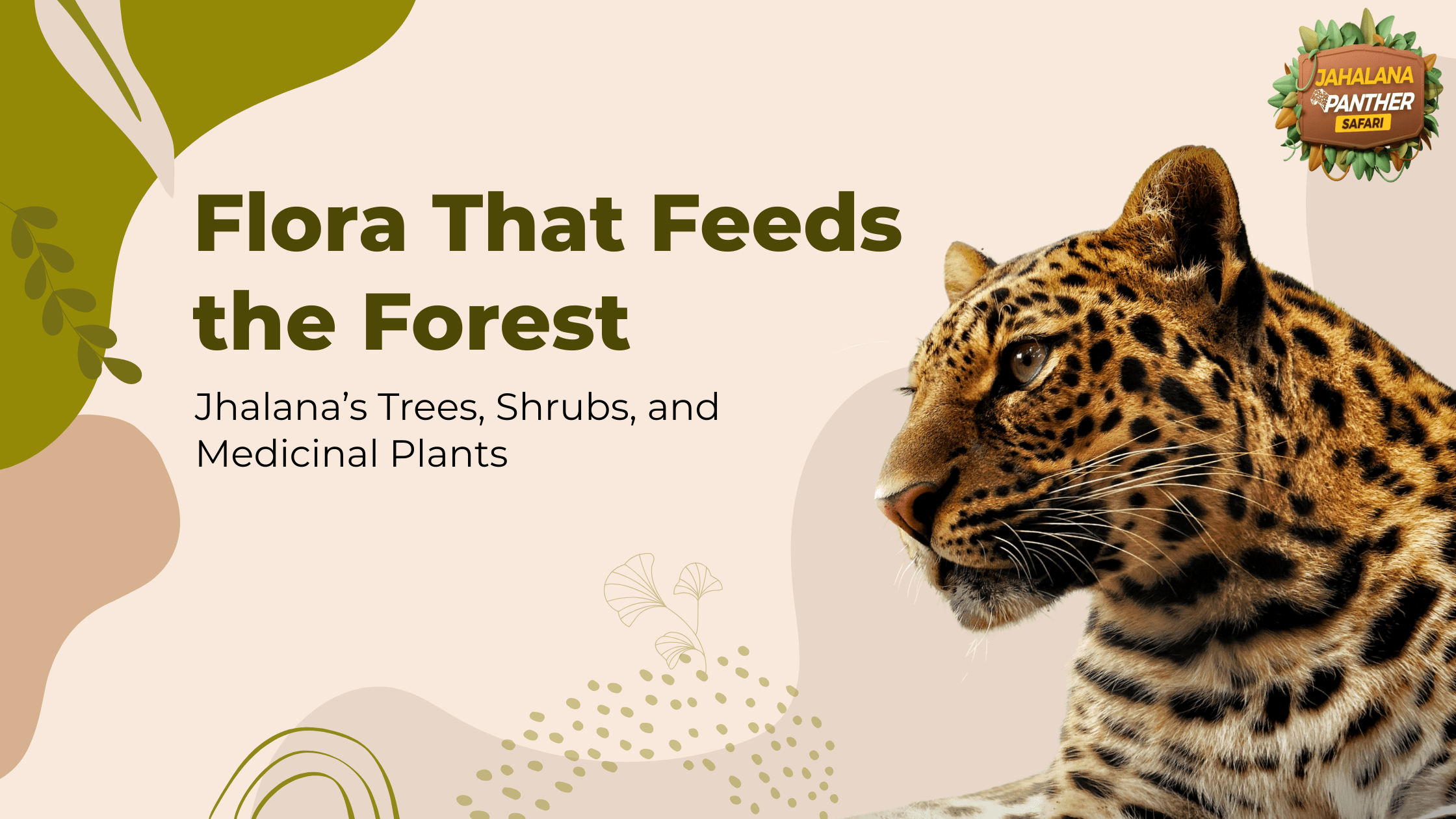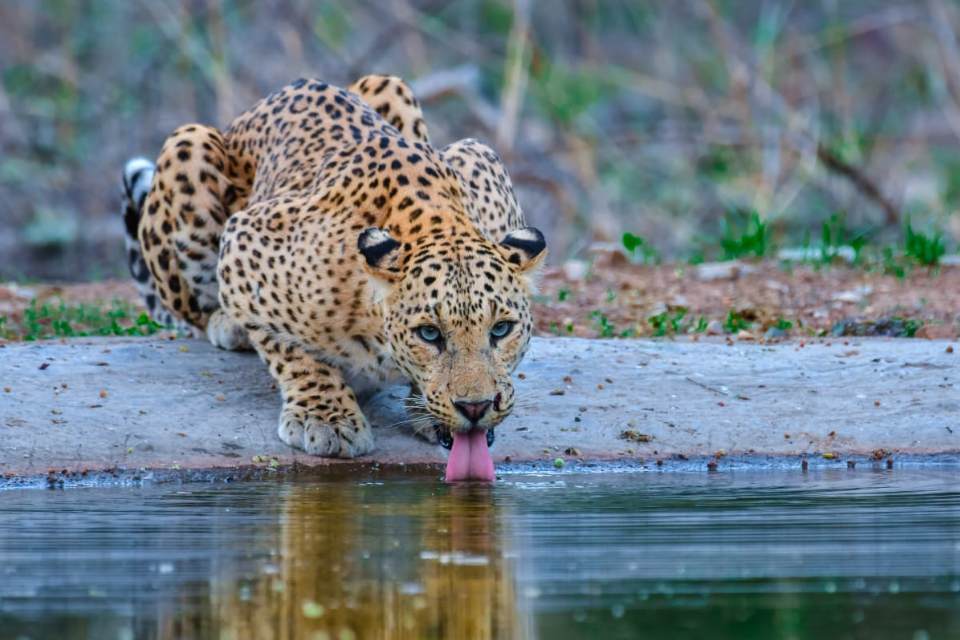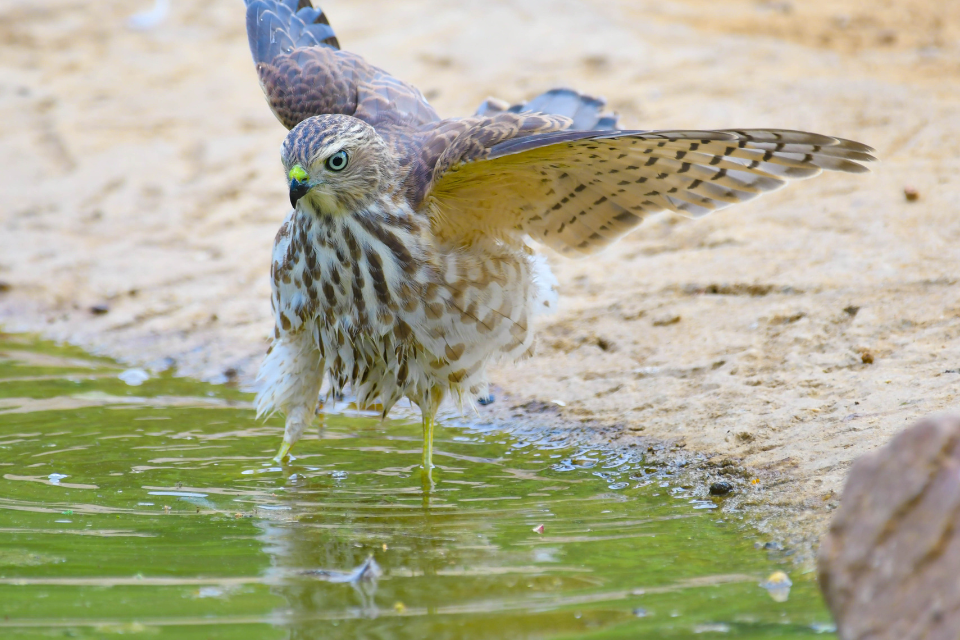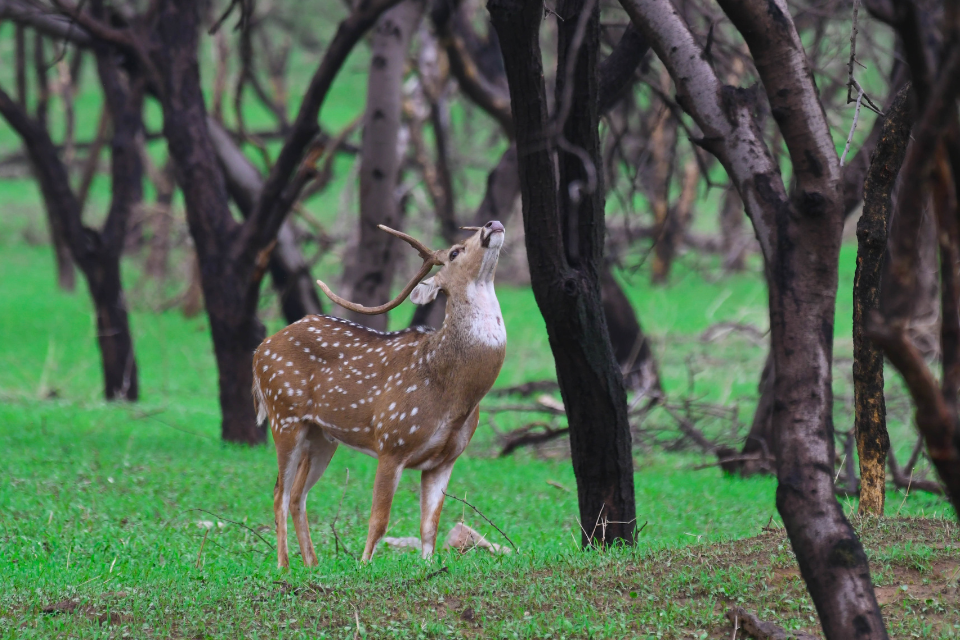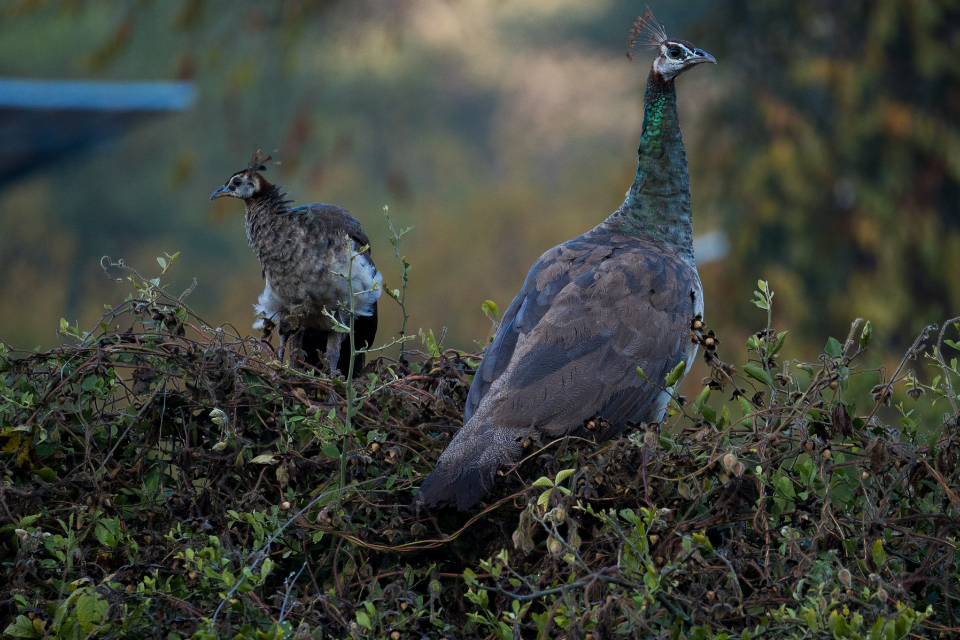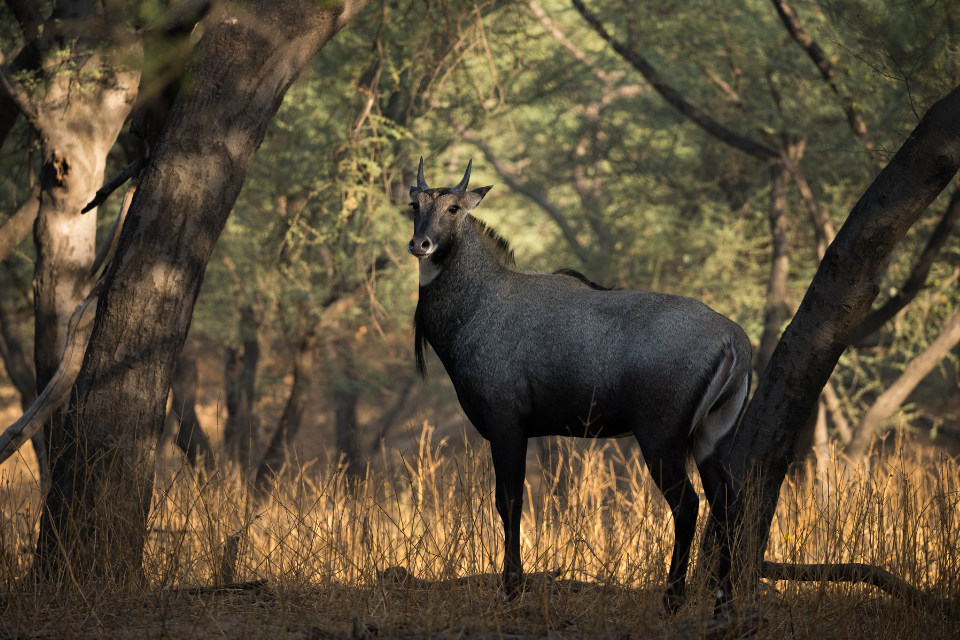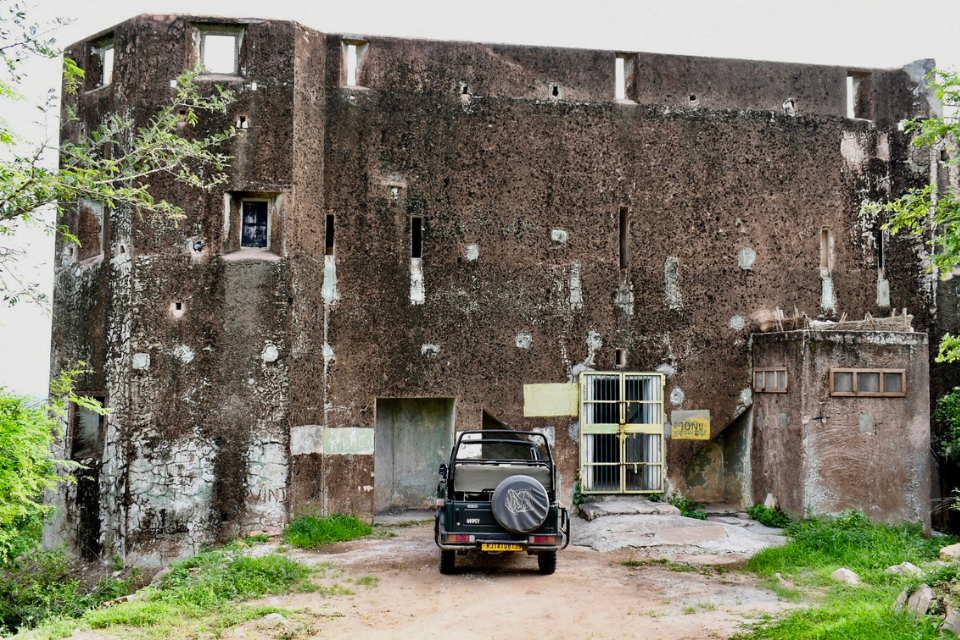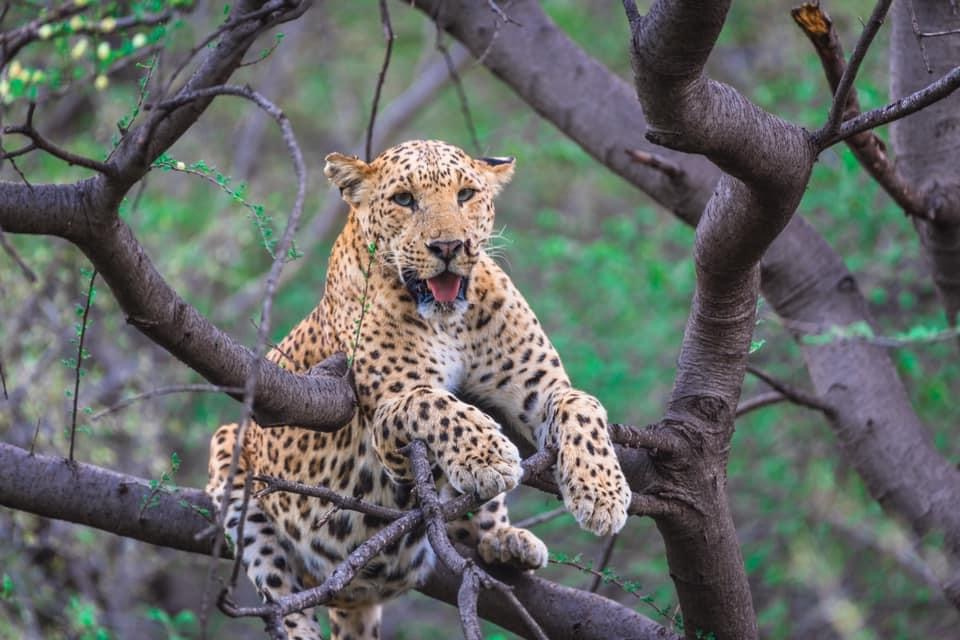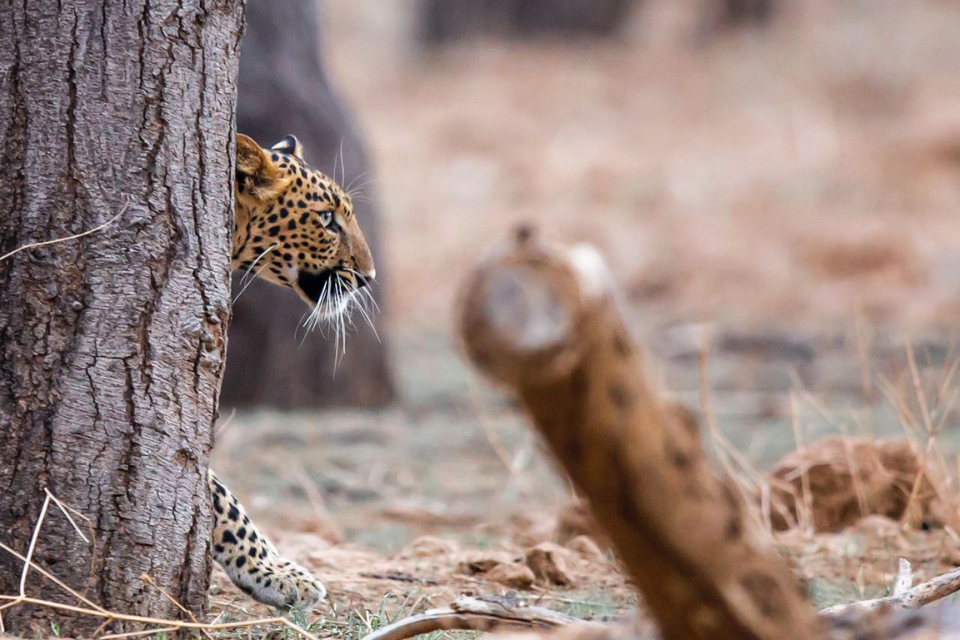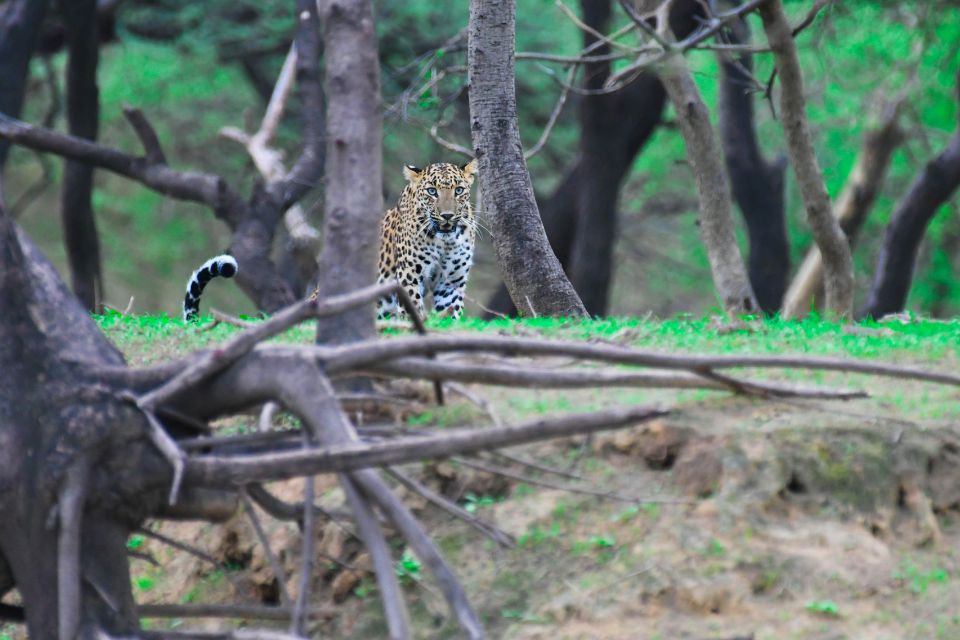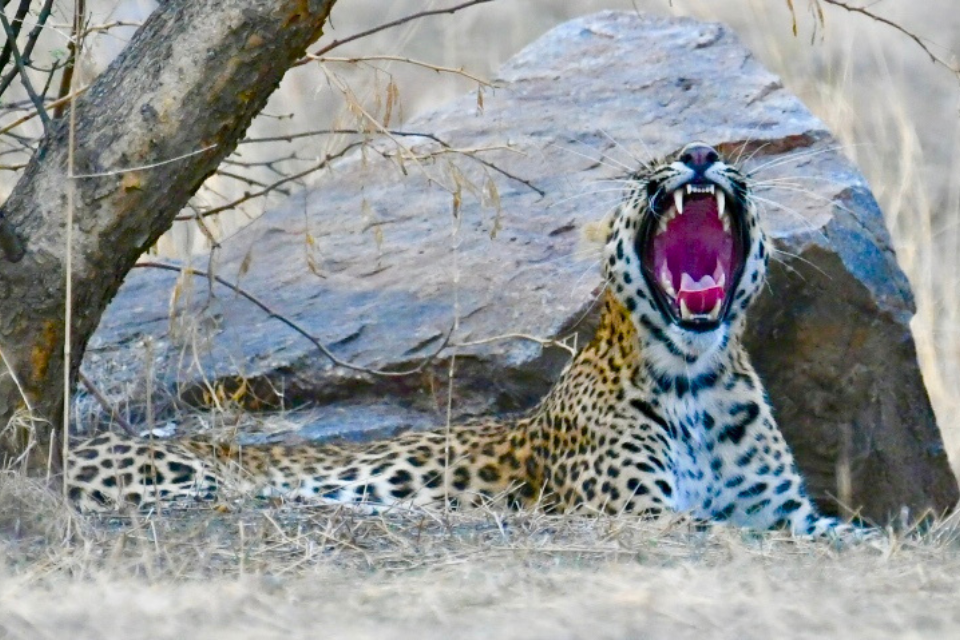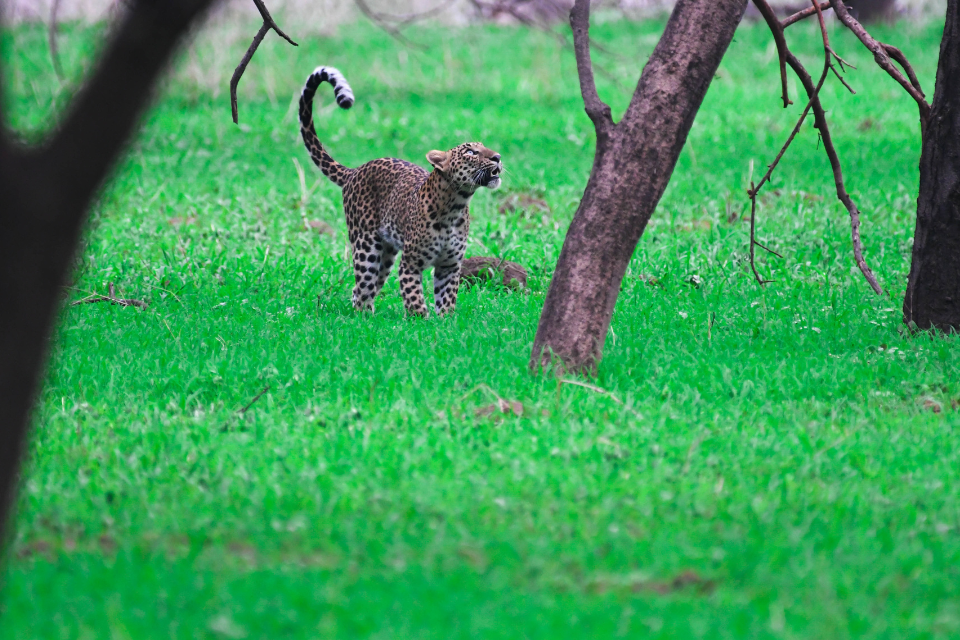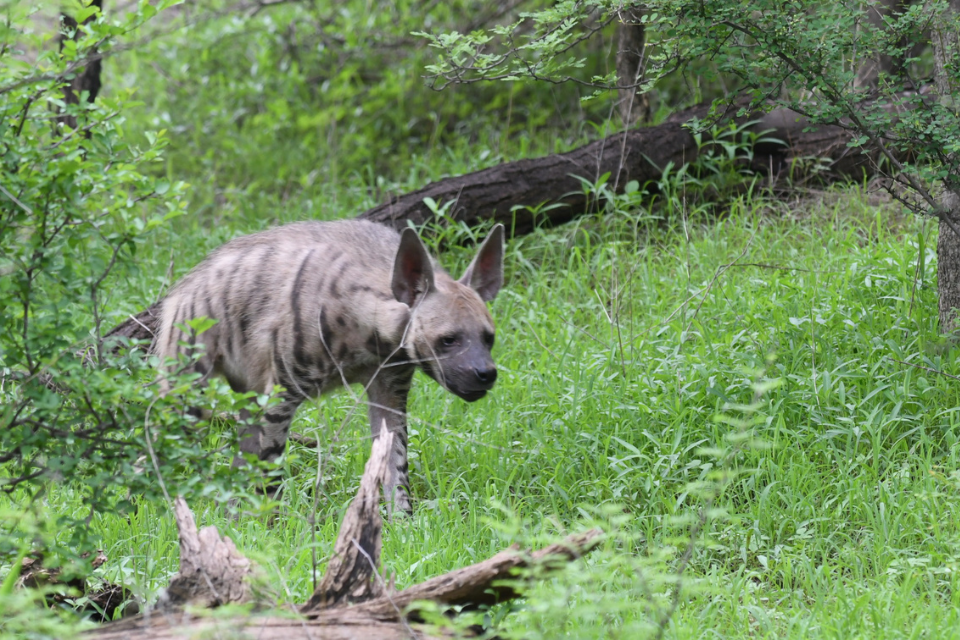- September 23, 2025
Flora That Feeds the Forest: Jhalana’s Trees, Shrubs, and Medicinal Plants
Tucked inside Jaipur’s urban sprawl, Jhalana Leopard Reserve is known for big cats—but its quiet backbone is green. The dry-deciduous woodland and scrub of the Aravalli foothills hold hardy trees, thorny shrubs, and time-tested medicinal plants that literally feed the forest—by shading soil, seeding food webs, and buffering heat. Jhalana is a mosaic of stony hillsides, gullies, and flats that flush emerald in the monsoon, then bronze through a long dry spell. That shifting rhythm shapes what survives here: plants built for drought, heat, and hungry mouths.
Below is a human-friendly, research-backed field guide to Jhalana’s signature flora—trees, shrubs, and medicinal plants—and why they matter for wildlife and people.
Jhalana at a glance: habitat & plant palette
- Biome: Dry-deciduous forest and scrub on ancient Aravalli rock.
- Dominants nearby/in the range: Dhok (Anogeissus pendula), Khejri (Prosopis cineraria), Babul/Acacia (Acacia nilotica), Ber (Ziziphus spp.). These are repeatedly recorded across the Aravalli landscape, including Jaipur.
- Local notes: Management narratives around Jhalana mention Prosopis juliflora (“vilayati babool”), originally spread for fuelwood; now often outcompeting native grasses/trees if left unchecked.
- Documented plant diversity: At least 40 wild plant species of economic use are recorded specifically from Jhalana in one study—a conservative snapshot that hints at far richer diversity.
Trees that power the food web
1) Dhok (Anogeissus pendula) — the Aravalli workhorse
If you scan Jhalana’s slopes in late monsoon, that soft olive canopy is often Dhok. It’s small-leaved, drought-tough, and forms the signature scrub woodland that wildlife uses for cover and shade. Across the Aravalli belt, Dhok is repeatedly cited as a resident or dominant tree. Ecologically, its leaf fall feeds soils; its tight canopy reduces desiccation on rocky slopes.
Why it matters:
- Provides thermal refuge for deer, jackals, and leopards.
- Leaf litter builds thin soils on rock, enabling herbs and grasses to germinate.
Creates perch and nesting structure for birds.
2) Khejri (Prosopis cineraria) — lifeline of the desert
Beloved across Rajasthan, Khejri is a nurse tree in arid systems—stabilizing soils, fixing nitrogen, and lifting water to make life possible under its canopy. It’s central to agroforestry and cultural traditions, and research catalogs multipurpose services: fodder, fuelwood, edible pods, medicinal bark/flowers, and microclimate creation for understory plants and livestock.
Why it matters in/around Jhalana:
- Improves soil fertility and moisture under its shade (classic “fertility island”).
- Offers fodder during scarcity, benefiting herbivores and pastoral economies around the reserve.
- Acts as refuge and corridor stepping-stone on urban edges.
3) Babul (Acacia nilotica) — thorned shelter & forage
Babul’s thorny crowns resist browsing and protect nests. Its pods and leaves feed ungulates; flowers support pollinators. It also contributes to soil stabilization on gullied ground—a recurring feature in Aravalli foothills.
4) Ber & wild jujubes (Ziziphus mauritiana, Z. nummularia) — drought sweets
Ber trees and bordi/jhar-beri shrubs fruit in the lean season, feeding birds, small mammals, and people. The Ziziphus nummularia shrub (see below) is especially common in arid Rajasthan and recognized for erosion control and forage.
5) Gular (Cluster fig, Ficus racemosa) — year-round pantry
Where watercourses or moister pockets persist, Gular occurs—valuable because figs (Ficus) tend to fruit across seasons. A large literature treats Ficus as keystone resources supporting diverse frugivores through food bottlenecks; in Indian contexts too, figs consistently prop wildlife communities. Jhalana-focused tour resources also list Gular among local trees.
Shrubs that stitch the understorey
Jhalana’s thorn-scrub is where much of the action is—seedlings get shade, birds get nesting sites, and soils get stitched together.
- Kair (Capparis decidua): A leaf-sparing, green-stemmed shrub with spicy edible berries (the “ker” in ker-sangri). It’s a soil binder, offers bird forage, and thrives in hyper-arid sites across Rajasthan, including Jaipur’s surrounds.
- Bordi / Jhar-beri (Ziziphus nummularia): A windbreak and erosion control stalwart; fruits for wildlife and people; hardy on dunes and rocky plains alike.
- Khimp (Leptadenia pyrotechnica) & Siyal/Sinia (Crotalaria burhia): Classic sand binders that stabilize loose soils and enable grasses to return—key to slope healing after monsoon run-off.
- Aak (Calotropis procera): Milky-latex shrub that colonizes disturbed edges; important for butterflies and early successional recovery.
- Jaal/Kankera (Maytenus emarginata): Thorny shrub-tree valued in folk medicine; persists in semi-arid scrub and sacred groves.
- Jal (Salvadora persica/oleoides): Salinity-tolerant small tree recorded in nearby districts; branches are traditional chew sticks (miswak) and berries feed birds.
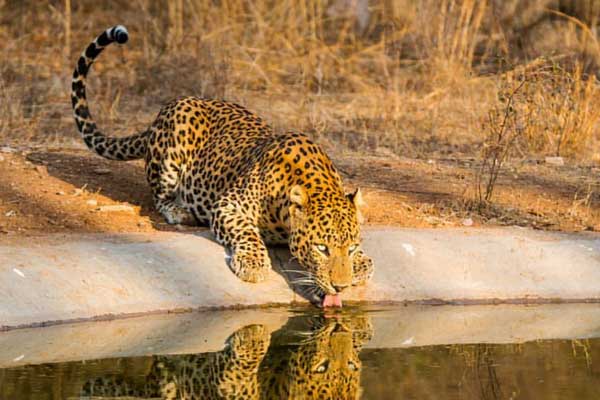
Medicinal plants: traditional wisdom, modern caution
Aravalli communities have a long tradition of plant-based remedies, many still studied today. A few with documented uses (not medical advice; see disclaimer):
- Khejri (Prosopis cineraria): Multiple studies review anti-inflammatory, antimicrobial, antidiabetic potentials; pods, bark, and flowers figure in folk medicine.
- Bordi (Ziziphus nummularia): Rich in bioactives; used in skin health, digestion, and wound-healing contexts; fruits are nutritive.
- Maytenus emarginata (Jaal/Kankera): Reviews list analgesic, anti-ulcer, oral care uses; state technical bulletins also summarize folk applications (e.g., leaf twig decoctions as mouthwash).
Rajasthan overall harbors a large medicinal flora within India; many Aravalli species underpin local healthcare knowledge. Ethical foraging rules apply inside and around protected forests: observe, don’t collect.
Invasive versus native: the Prosopis juliflora question
You can’t discuss Jaipur-area scrub without the “vilayati babool” dilemma. Prosopis juliflora was promoted historically for fuelwood and soil recovery, but it spreads aggressively, alters fire regimes, and can suppress native regeneration—a debate playing out across north-western India. In Jaipur’s Jhalana narratives, managers explicitly note juliflora dominance and its tendency to limit grasslands/other trees if unmanaged. Broader Indian work explores when to remove/retain it and how to restore natives.
Why this matters: Grass-and-shrub mosaics are critical for prey species and ground-nesters. Restoring Dhok-Khejri frameworks and native shrubs improves hydrology, soil, and biodiversity compared with wall-to-wall juliflora thickets. (Elsewhere in the region, governments even run targeted juliflora control to revive native vegetation.)
How plants “feed” Jhalana’s wildlife (and the city around it)
- Food security for fauna: Figs stagger fruit through seasons; Ber/Bordi fruit in the dry; Khejri pods and Acacia flowers/pods sustain browsers—smoothing wildlife food booms and busts.
- Microclimate & shade: Tree islands cut ground temperatures and reduce evapotranspiration, creating cool refuges used by leopard prey and small mammals. (Khejri is especially good at this.)
- Soil builders: Litter from Dhok and Acacia builds humus on skeletal soils; shrubs like Khimp and Crotalaria trap sediment and muffle runoff.
- Seed dispersal hubs: Fruit trees (figs, ber) attract birds and civets, which move seeds into safe microsites—bootstrapping forest patches on rocky slopes.
- People–forest ties: Many of these plants are edible, medicinal, or fodder-bearing, linking urban residents and peri-urban communities to Jhalana’s wellbeing—and vice-versa.
When to visit & how to read the plants
- Best windows: Monsoon to early winter (Aug–Dec)—fresh foliage, flowers/fruiting on figs and ber, excellent bird activity.
- Look for layers: Rocky ridges with Dhok and babul, mid-slopes with mixed shrubs, lowlines where Gular or Salvadora tuck into moister soils.
- Field cues:
- Button-like Dhok samaras (papery fruit heads).
- Green, leaf-sparing Kair stems with red-pink berries.
- Zig-zag Ziziphus twigs with paired spines.
- Milky latex on Calotropis if a leaf snaps.
Responsible etiquette: Stay on tracks, don’t pluck flowers/berries, and skip feeding wildlife. Your guide can help point out species without disturbing them.
Quick species spotlight (with uses/roles)
- Dhok (Anogeissus pendula): Slope stabilizer, cover for ungulates; signature Aravalli tree.
- Khejri (Prosopis cineraria): Nitrogen-fixing nurse tree; fodder, pods; strong cultural value.
- Babul (Acacia nilotica): Nesting & nectar, pods for herbivores; gullies stabilizer.
- Gular (Ficus racemosa): Keystone fruiting cycles; supports birds, bats, primates.
- Bordi (Ziziphus nummularia): Windbreak, erosion control, edible fruit, fodder.
- Kair (Capparis decidua): Edible berries, bird magnet, superb soil binder.
- Khimp (Leptadenia pyrotechnica): Dune/slope stabilizer; early successional shrub.
- Jaal (Maytenus emarginata): Oral-care decoctions in folk medicine; hardy hedgerow.
FAQs
1) What kind of forest is Jhalana?
Dry-deciduous and thorn-scrub within the Aravalli foothills—lush in monsoon, leaf-sparse in summer.
2) Which trees are most typical here?
Dhok, Khejri, Babul/Acacia, Ber, and in moister pockets Gular (Ficus).
3) Why are figs (Gular) often called “keystone”?
Because Ficus species tend to fruit across seasons, supporting many frugivores when little else is available—propping up the food web.
4) Is Prosopis juliflora good or bad for the reserve?
It’s complicated: it stabilizes poor soils but can overtake natives and suppress grasslands. Managers often control or thin it to restore native mosaics.
5) What shrubs should I look for from the safari jeep?
Kair, Bordi, Khimp, Crotalaria burhia, Calotropis—each a key soil binder or food source.
6) Are there documented useful plants inside Jhalana?
Yes—surveys list dozens of economically useful wild plants from Jhalana; that’s a baseline that likely undercounts true diversity.
7) Can I collect leaves, pods, or medicinal herbs?
No. Observe only. Collection inside/around protected forests harms regeneration and is usually illegal without permits.
8) Do these plants help leopard conservation?
Absolutely: they create cover and prey habitat, feed herbivores, stabilize slopes and water points—quietly supporting everything visitors come to see.
9) When is plant life most visible?
Aug–Dec offers fresh growth and flowering/fruiting of many species; summer reveals architecture of the scrub.
10) Where can I learn more before visiting?
Look up Aravalli vegetation notes and state forest brochures; a good naturalist on your drive is invaluable.
Responsible visitor tips
- Stay native-curious: Ask your guide to point out Dhok and Khejri—photos help you ID them later.
- Think layers: Celebrate shrubs as much as trees—they’re the engineers that hold Jhalana together.
- Leave no trace: No picking, no feeding; keep to tracks to protect crusted soils and seedlings.
- Support restoration: Choose operators who back native-plant restoration and invasive control.
Disclaimer (for medicinal references)
Information on medicinal plants in this article is educational and not a substitute for professional medical advice. Do not ingest or apply any plant without consulting a qualified health professional and respecting local forest laws.
Recap: Why Jhalana’s flora matters
In an urban wildlife reserve, plants are infrastructure: they cool the air, build soil, feed animals, steady slopes, and give the city a resilient, living edge. Learn to spot Dhok’s tight canopy, rest in Khejri’s shade, cheer for the figs that keep birds singing through lean months, and admire the shrubs that quietly stitch the ground together. Protect those, and you protect the leopards too.
Disclaimer All images used in this blog are either sourced from public domain or credited to their respective owners. If you are the copyright holder of any image and wish to request its removal or proper attribution, please contact us at [email protected]
